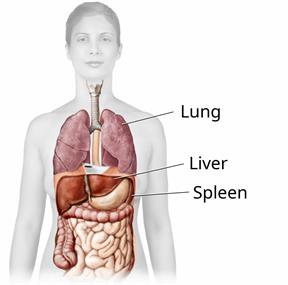ThisisPatientEngagementcontent
Gaucher Disease
Learn more about our Patient Engagement products now! Turn your patients into active participants in their healthcare by giving them easy access to the same evidence-based information you trust – but delivered in an easy-to-understand format.

Gaucher disease is a rare disease that causes fatty substances called lipids to build up in the body. The lipids most often build up in the liver, lungs, bones, and spleen. In severe forms of this disease, lipids can build up in the brain.
Gaucher disease can range from mild to severe. There are three types of the disease:This condition is caused by not having enough of a certain type of enzyme (glucocerebrosidase). An enzyme is a body protein that breaks down other body substances.
Gaucher disease is a genetic disorder. It is passed from parent to child (inherited). To get the disease, the genes must be passed to you by both your mother and your father.
You are more likely to develop this condition if you are of central or eastern European (Ashkenazi) Jewish descent.
People with severe type 2 Gaucher disease often do not live long enough to have symptoms.
 This condition is diagnosed based on your medical history, symptoms, and a physical exam. During the exam, your health care provider will check to see if your spleen or liver has become larger than normal. You may also have tests, including:
This condition is diagnosed based on your medical history, symptoms, and a physical exam. During the exam, your health care provider will check to see if your spleen or liver has become larger than normal. You may also have tests, including:Treatment for type 1 or type 3 Gaucher disease will depend on the type of disease, the severity of the disease, and your age. In many cases, you can manage type 1 and type 3 Gaucher disease with medicines that break down lipids or keep them from building up. Your health care provider will help you choose a treatment that is right for you.
There is no treatment for type 2 Gaucher disease.
Activity
General instructions
These symptoms may represent a serious problem that is an emergency. Do not wait to see if the symptoms will go away. Get medical help right away. Call your local emergency services (911 in the U.S.). Do not drive yourself to the hospital.
This information is not intended to replace advice given to you by your health care provider. Make sure you discuss any questions you have with your health care provider.
Cookies are used by this site. To decline or learn more, visit our cookie notice.
Copyright © 2025 Elsevier, its licensors, and contributors. All rights are reserved, including those for text and data mining, AI training, and similar technologies.